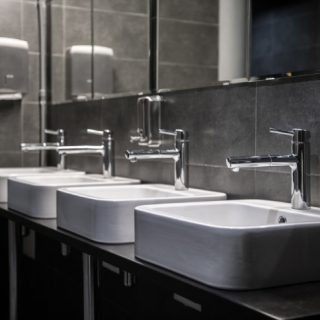Smart Soil Moisture Data
A Pivot to IoT in the Potato Fields
Challenge
 Agriculture feeds the world, yet farmers are under increasing pressure to optimize the use of limited resources, like water, to do so. On average, agriculture accounts for 70% of all water that is consumed annually. That’s over 2 quadrillion gallons of water, enough to cover the entire United States in 2 feet of water. It’s no surprise that managing the flow of this resource is of paramount importance to farms both big and small. Delivering the right amount of water to the right place at the right time, in remote areas where cellular communications is weak, is a challenge that fortunately is now easier using LoRaWAN wireless communications.
Agriculture feeds the world, yet farmers are under increasing pressure to optimize the use of limited resources, like water, to do so. On average, agriculture accounts for 70% of all water that is consumed annually. That’s over 2 quadrillion gallons of water, enough to cover the entire United States in 2 feet of water. It’s no surprise that managing the flow of this resource is of paramount importance to farms both big and small. Delivering the right amount of water to the right place at the right time, in remote areas where cellular communications is weak, is a challenge that fortunately is now easier using LoRaWAN wireless communications.
In agriculture, new technologies such as subsurface sensing, wireless sensors, and soil probes are responding to farmer’s challenges. These systems help farmers track conditions on their land in real time and apply water, and other inputs such as fertilizer, exactly when and where they are needed. IoT technology can help with improving water management by optimizing water delivery systems to also reduce costly input waste and prevent soil and ground water pollution. Pivotal to these solutions are sensors that leverage new communication protocols and provide farmers easy access to data on water usage, introducing a newfound ability to identify areas where water is needed, and conservation is possible.
Claassen Farms has been growing a variety of crops including wheat, corn, sugar beets, seed canola and seed alfalfa, since 2005. The family farm is comprised of 8,000 acres and has doubled in size since its original Smart Soil Moisture Data: A Pivot to IoT in the Potato Fields Powered by MultiTech operation. The farm is strongly committed to keeping up with technology within its potato production, which takes place across 2,000 acres. “We’re fairly technologically advanced,” says Claassen, who feels it’s important to keep up with the latest technologies in potato production.
“We’re fairly technologically advanced. All pivots are remotely monitored, and monthly printouts of water usage are recorded and monitored where Sensoterra sensors are a major help."
JP Claassen Claassen Farms
Solution
In rural, southern Alberta, Canada, at Claassen Farms, cellular connectivity is a challenge, so leveraging new communication technologies initially seemed impossible. After researching many of the options, however, Claassen Farms found a solution with single depth sensors from Sensoterra (leader in wireless soil moisture sensors for water management solutions), to track soil moisture and monitor water requirements, utilizing a LoRaWAN communications network for their crops. “All pivots are remotely monitored, and monthly printouts of water usage are recorded and monitored where Sensoterra sensors are a major help,” continued Claassen.

Sensoterra is an affordable, wireless IoT based and remote system that offers farmers real-time insight into the soil moisture condition of crops. With the mission of improving water management worldwide by providing actionable insights to soil moisture, Sensoterra’s wireless sensors were clearly the right choice.
To communicate to and from the sensors, Sensoterra uses MultiTech’s xDot® Long Range LoRa® Modules (MTXDOT Series). The xDot® is a secure, CE/FCC/RCM/GITEKI certified, Arm® Mbed™ programmable, low-power RF module, that provides long-range, low bit rate M2M data. These low-power wide area networks extend battery life and range, providing improved connectivity for most connected device use cases.
Claassen says he enjoys the challenges that come with potato farming. “You’re constantly being challenged. From one year to the next, it’s never the same,” he says. “It keeps things interesting, and it keeps it fun. Now we can utilize our allotted water for improved irrigation and more confidence in irrigation amounts. It is rewarding to see that what we are doing is working!”
“You’re constantly being challenged. From one year to the next, it’s never the same. It keeps things interesting, and it keeps it fun. Now we can utilize our allotted water for improved irrigation and more confidence in irrigation amounts. It is rewarding to see that what we are doing is working!”
JP Claassen Claassen Farms



